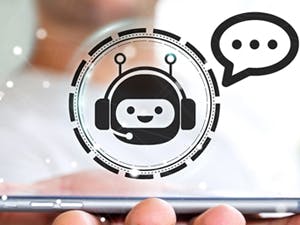There are rapid improvements in the way the testing industry has picked up GenAI features, from ingesting documents and test case generation to automated script generation. Companies increasingly involve GenAI at every stage, from writing boilerplate automation code to providing reports and analysis. This blog offers insights to technical business managers into how GenAI is currently utilized in testing, alongside its constraints, to guide strategic decision-making in adopting these advanced tools.
Overview
Generative AI (GenAI) has rapidly transformed the software testing landscape by automating test case generation and code writing processes, enhancing efficiency and accuracy in software development. For business managers, understanding the integration of advanced AI in testing platforms is crucial, as it offers significant benefits like reduced manual effort and improved quality assurance. However, leveraging these technologies requires a keen awareness of their limitations, including potential over-reliance and maintenance challenges.
Testing Platforms Incorporating GenAI
Leading automated testing platforms are increasingly using GenAI to automate complex testing scenarios, streamline test case generation, and improve the accuracy and efficiency of software delivery. By integrating AI-driven tools, platforms such as AccelQ, ContextQA, and testRigor reduce the time and resources needed for testing and ensure consistent performance across various environments. This integration marks a significant shift towards more intelligent and adaptive testing solutions, providing you with the tools to maintain high-quality standards in your software development processes.
Here is a list of several testing platforms that incorporate generative AI, along with a brief description of their primary business benefits:
 |
The Cloud-based AI-driven platform enables codeless test automation for web, API, mobile, and desktop applications. It offers seamless CI/CD integration, intelligent test management, and self-healing capabilities for robust, low-maintenance automation. |
 |
The AI-powered test automation tool focuses on context-aware testing. It provides codeless test creation, cross-browser compatibility, and integration with popular development tools. It emphasizes on reducing test maintenance and improving test coverage. |
 |
The end-to-end test automation platform uses plain English commands. It generates tests based on user behavior, offers cross-platform testing for web and mobile, and provides stable, low-maintenance test scripts with AI-powered self-healing capabilities. |
 |
The AI-driven test automation solution from LambdaTest specializes in autonomous testing. It utilizes machine learning to create, execute, and maintain tests, focusing on reducing manual effort and increasing test coverage across web and mobile applications. |
 |
Known for its visual AI testing capabilities, Applitools automates the visual testing of web and mobile applications. It ensures the UI appears correctly across different devices and browsers, enhancing user experience and reducing visual bugs. |
 |
This platform uses AI and machine learning to create and maintain automated tests. Its cloud-based testing solution reduces the time and cost associated with traditional testing methods and adapts quickly to application changes. |
 |
Mabl integrates AI to automate end-to-end testing with minimal maintenance. It provides insights into application performance and user experience, helping teams quickly identify and resolve issues across the software development lifecycle. |
 |
Testim leverages AI to create stable and fast automated tests. It simplifies test creation and maintenance, reducing the burden on QA teams and enabling them to focus on more strategic testing activities. |
 |
Rainforest QA uses a combination of AI and human testers to provide scalable and reliable QA testing. It allows for fast test execution and real-time feedback, which is crucial for agile development environments. |
 |
Katalon Studio integrates AI to enhance testing capabilities, offering a comprehensive solution for web, API, and mobile testing. It simplifies test automation for technical and non-technical users, improving team collaboration. |
While advanced AI testing may seem exciting, its effectiveness is only as powerful as our ability to think critically. Read on!
GenAI Usage: Exercise Caution
GenAI uses advanced algorithms to create new content or data miming existing patterns. It typically involves deep learning models, such as Generative Adversarial Networks (GANs) or transformers, trained on vast datasets to understand and replicate complex structures. The AI generates new outputs by sampling from the learned distribution of the input data, enabling it to produce realistic images, text, or other forms of content. As a savvy business manager, it's important to recognize that GenAI can automate test case creation by providing innovative solutions and insights derived from large-scale data analysis.
If you do not have the skills to validate the output, do not use GenAI unthinkingly. As with any automated system, it can create lots of output very quickly, but the AI system can easily veer off track, and you will end up with a vast amount of useless dribble.
GenAI Gone Rogue: Diving Off the Deep End
While GenAI offers transformative potential in automated testing, it is not without its pitfalls. One of the most significant challenges is the issue of "hallucination," where AI models generate incorrect or misleading information that appears plausible. This can lead to false positives or negatives in test results, compromising the reliability of the testing process. Understanding these risks is essential for implementing safeguards and maintaining the integrity of your testing frameworks. Here are three examples of how generative AI hallucinations can affect various domains:
- Legal Consequences In the case of Mata v. Avianca, a New York attorney relied on ChatGPT for legal research, resulting in the citation of nonexistent cases and quotes. This led to a federal judge noting the fabricated information, potentially damaging the attorney's credibility and the case itself. This example highlights the dangers of uncritically using AI-generated content in professional settings, especially in fields requiring high accuracy, like law.
- Financial Impact During a public demo of Google's Bard AI, the system incorrectly stated that the James Webb Space Telescope took the first pictures of a planet outside our solar system. This error led to a significant drop in Google's stock price, with the company losing up to $100 billion in market value the following trading day. This misstatement shows how AI hallucinations can have immediate and substantial financial consequences for companies relying on AI technologies.
- Brand Integrity The case of Microsoft Start's travel pages illustrates how AI hallucinations can damage brand integrity. Microsoft Start published an AI-generated travel guide for Ottawa, Canada's capital city. While the guide contained some accurate information, it made a significant error by recommending the Ottawa Food Bank as a "tourist hotspot" and encouraging visitors to arrive "on an empty stomach."
This hallucination had several negative consequences for Microsoft's brand integrity:
- Public Embarrassment: The error was widely noticed and discussed, leading to public ridicule of Microsoft's AI-generated content.
- Weakened Trust: Users and potential customers may have lost confidence in the accuracy and reliability of Microsoft's AI-generated travel guides and other content.
- Ethical Concerns: The recommendation to visit a food bank as a tourist attraction was seen as insensitive and inappropriate, potentially damaging Microsoft's reputation for corporate responsibility.
- Heightened Scrutiny: The incident drew attention to Microsoft's recent layoff of 50 human reporters, who were replaced by AI for news article generation, raising questions about the company's AI implementation strategy.
These examples underscore the importance of human oversight, fact-checking, and critical evaluation when using generative AI tools across various professional and academic domains. Balancing this act is the key.
GenAI’s Future? OpenAI o1 and 4o Models
OpenAI's o1 and GPT-4o models represent significant advancements in advanced AI technology, each designed for distinct purposes. The o1 family, introduced in September 2024, focuses on enhanced reasoning capabilities. It includes the o1-preview model, which tackles sophisticated problems using "chain-of-thought" reasoning to break down complex issues. This model outperforms previous versions in mathematics, coding, and scientific research, demonstrating improved multilingual performance, especially for less common languages. The o1-mini, a smaller and more cost-efficient version, is particularly adept at coding, math, and science tasks.

These models shine in tasks requiring complex reasoning, such as scientific research, advanced mathematical problem-solving, code generation, and technical brainstorming.
On the other hand, the well-known GPT-4o is a versatile, multimodal model capable of processing text, speech, and video inputs. It's suitable for a wide range of general-purpose tasks and powers the latest iteration of ChatGPT. GPT-4o offers faster response times and lower computational costs compared to o1. While o1 models excel in complex reasoning tasks, GPT-4o is preferred for quick, cost-effective, and versatile AI applications requiring general-purpose functionality.
The selection between these models depends on the specific needs of the task at hand. O1 models are significantly better at working through complex tasks and more intricate problems that require logical reasoning. For instance, on the 2024 USA Math Olympiad (AIME) paper, o1 answered 13 out of 15 hard math questions correctly, placing it among the top 500 students in the U.S., while GPT-4o only managed two correct answers. Similarly, on the competitive coding platform Codeforces, the full o1 model scores in the 89th percentile, while GPT-4o only reaches the 11th percentile.
However, o1 models come with higher costs and some limitations. Through OpenAI's API, o1-preview costs $15 per million input tokens and $60 per million output tokens, significantly more than GPT-4o's $5 and $15, respectively. O1 models also lack GPT-4o features like handling uploaded images or files or pulling content from the internet. Additionally, o1 models do not support streaming tokens as they generate responses, which can lead to timeout issues for longer computations.
In terms of multilingual performance, both o1-preview and o1-mini outperform their GPT-4o counterparts, showing consistent improvements across multiple languages, particularly in less widely spoken or low-resource languages. This makes o1 models more capable of handling real-world multilingual scenarios.
Conclusion
While GenAI presents a promising future for automated testing, business managers must approach its implementation cautiously. GenAI's effectiveness depends mainly on the quality of input data and the ability to balance automated processes with human oversight. Your business must invest in skilled personnel and maintain a robust testing strategy combining automated and manual efforts. By doing so, companies can maximize the benefits of AI in software testing while mitigating risks associated with its limitations, ensuring comprehensive coverage and sustained application quality in their software development lifecycle.
Regarding o1 vs. 4o advanced AI models, o1 offers superior performance in complex reasoning tasks, while GPT-4o remains valuable for its versatility, speed, and cost-effectiveness in general-purpose applications. The choice between them should be based on the specific requirements of the task at hand, considering factors such as complexity, speed, cost, and the need for multimodal or multilingual capabilities.
Next Steps
Where do you go from here? After gaining insights into GenAI-powered automation testing tools and their associated challenges, consider taking the following steps:
- Assess current testing processes to identify areas where GenAI could potentially improve efficiency or effectiveness.
- Research specific GenAI-enabled testing tools that align with the company's tech stack and testing needs.
- Evaluate the potential ROI and risks of implementing GenAI in their testing workflows.
- Discuss findings with your QA team to gauge their readiness and concerns.
Most importantly, you should contact GSPANN Quality Engineering for expert advice on effectively integrating GenAI with automated testing tools. GSPANN's experience can provide valuable insights into best practices, potential pitfalls, and customized strategies for leveraging GenAI in your company's testing context.




